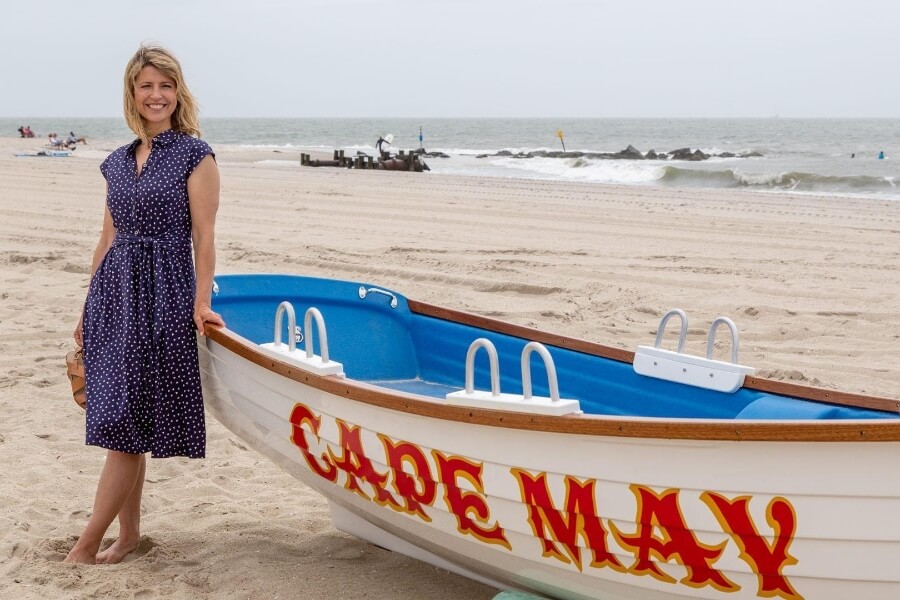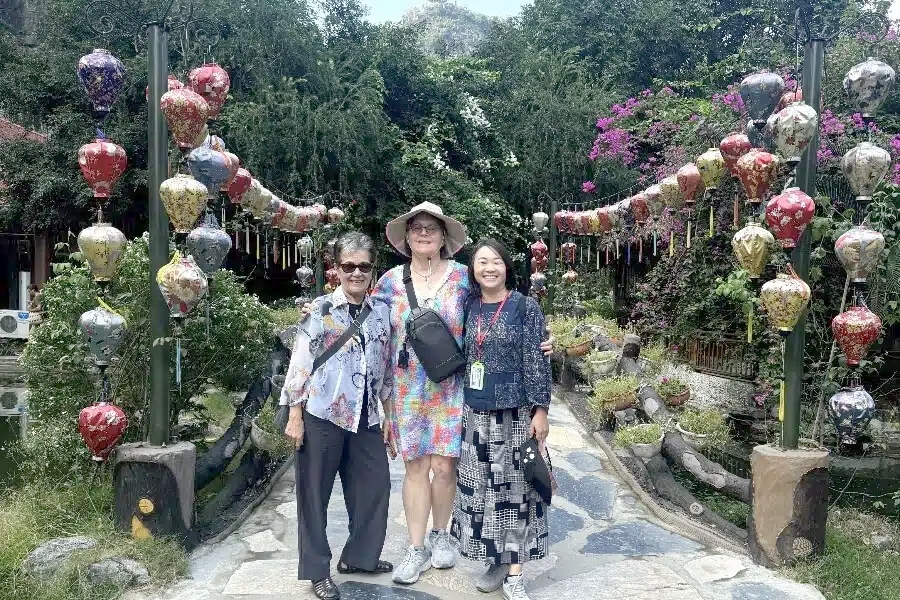It wasn’t the first time I’d posed naked for photographs, but when my friend George asked me to model nude, it was definitely unnerving.
I was in my forties, after all—long past what I considered my physical prime. I’d gotten my kicks, and more than a little validation, doffing my clothes for the camera in my younger days. But once the creases around my eyes had developed their own tributaries, and my upper thighs had started to avalanche like two sand dunes collapsing toward one another, I’d made what seemed like the sensible decision to stop. I deleted my portfolio from the online modeling site that matched photographers with willing subjects, told friends that I was done, and moved on.
But then, almost ten years later, I heard from George.
Read More: Stripped Down and Proud! Posing as an Art Model in My 60s
The Project
I’d known who he was for a while. He moved in some of the same circles of photographers and models that I once had. But George was in a different category from my old crowd of impassioned, mainly non-professional hobbyists. He’d been the photo director at several groundbreaking magazines and chaired the photography department at a major New York art school. His images appeared regularly in high-profile glossies and gallery exhibits. He was the real thing.
My disappointment with my middle-aged body went far beyond its slackened surfaces.
It wasn’t just George’s pedigree that prompted me to consider modeling again, though. It was also the project he was working on, which he described to me when he reached out by e-mail: A series documenting the erotic beauty of older women.
The concept whipped up a maelstrom of feelings for me. It was admittedly thrilling to imagine that my body, with all its rapidly dimpling and deflating parts, could still be considered an object of desire. But it was also anxiety provoking. What if, by posing for nude photos at my age, I appeared not alluring, but pathetic? As if I were trying to cling to the vestiges of an appeal I no longer had?
I’d grown up in a family where gorgeousness—particularly of the gleaming-new variety—was prized above all else. My father, a high-profile art director, had been the sort of man who owned a series of Jaguar E Types in the ‘60s, suffering their faulty brakes and engine failures because their exquisite looks made them worth it. My mother, a willowy, high-cheekboned blonde, had been an agency model in her native Australia, and her grooming rituals—which involved the almost ceremonial application of cold cream and bath oil, and the careful, counted strokes of a Mason Pearson hairbrush—had transfixed me as a child. Beauty, I grew to understand, was relevance. It was what made something, or someone, valuable in the world.
The Melancholy

On a deeper level, George’s project also conjured a profound melancholy. My disappointment with my middle-aged body went far beyond its slackened surfaces (which none of my mother’s lotions or elixirs seemed to aid). Wracked by reproductive maladies, it had also failed to fulfill what I had hoped would be its higher purpose: producing a child. Motherhood, I had decided, was what was meant to supersede beauty; attaining it would give my body a meaning far greater than its appearance. But it hadn’t happened for me. Now, with neither nubile allure nor offspring to anchor it, my corporeal form seemed useless.
In the end, what convinced me to pose for George was another e-mail, this one from a treasured friend my age who had also modeled in her younger years. She’d more or less quit, too—until she’d agreed to collaborate with George.
Her message included an image attachment, which I opened. In the photo, my friend was posed as a classic odalisque, semi-reclined on a couch with her eyes closed and chin tilted back. Sunlight streamed through a nearby window, illuminating her nakedness: the deep swale between her sloped breasts, the pooled flesh of her weighty legs, her stomach cleft by the caesarean scar that had yielded twin sons. She looked every bit her age. She also looked utterly magnificent, like a lush, full-blown flower.
I felt hot tears spring to my eyes. I wanted to look like that. I wanted to feel like that.
Getting Naked Over 40: The First Meeting
Two weeks later, I rang the buzzer outside George’s Brooklyn studio, jangly with apprehension. I had no idea what to expect of this person, whose own profile photo epitomized elegant cool—it showed a slim, serious-looking black man with silver rings and a graying afro fade— but whose work clearly embraced the unconventional. What would his discerning eyes perceive when they looked at me?
I’d grown up in a family where gorgeousness—particularly of the gleaming-new variety—was prized above all else.
As soon as he opened the door and welcomed me in, though, I felt my fretfulness evaporate. As we sat across from one another and chatted those first few minutes—near the wall of windows that I recognized from my friend’s portrait—I felt a strange sort of calm settling over me. It had partly to do with the space, which was filled with mellow afternoon light and the growling, stereophonic thrum of a PJ Harvey album—but it had more to do with George. I saw as we spoke that there was an almost preternatural stillness about him, a steadiness in his gaze, which set me at ease.
I remember being lulled over the next several hours by his soothing stream-of-consciousness narration. George was voluble about many things that inspired him—the music of British art-rockers like Scott Walker and Bryan Ferry; the films of Catherine Breillat and Wong Kar Wei; the stories of Mary Gaitskill, whom he’d recently photographed for a magazine; a particular monograph by the erotic photographer Nobuyoshi Araki. When he spoke of his wife, to whom he’d been married for many years, he referred to her as “The Great Beloved.”
The Pictures
What I have no recollection of at all, funny enough, is modeling. It was only later, when George sent me the pictures from our shoot, that I was able to piece together that part of the time we’d spent together: Oh, right, I started out leaning against those windows, and then moved to that far wall. Yes, this was where I took off my dress, when I stretched my arms above my head, how I arched my back.
The more I studied the photos, the more okay I felt about these imperfections.
I couldn’t stop looking at them. It wasn’t that I decisively loved the way I looked in George’s photos; especially at first, I found my self-critical gaze lingering too long over a shot where my breasts looked wilted, or where my too-thick makeup had refused to disguise the pouches under my eyes. But the more I studied them, the more okay I felt about these imperfections. Eventually, I even started to feel a sort of fondness for them.
Because they were real, these blotches and folds and grooves that had marked the passage of time on my body. More that that, they were evidence—of the life I’d lived, the adventures I’d had, the storms I’d weathered. Through all of it, I realized, my body had carried me, the way a wind-tossed, rain-battered tree shelters the creatures living inside it. It hadn’t escaped unscathed. But it had been a sturdy, even powerful, vessel. There was a certain beauty in that.
The Gathering
Now that more years have passed, I’ve come to cherish those images from George for what they are: precious artifacts. They don’t just remind me of a critical moment in my life, when I was struggling to understand my value in the world; they also recall the brilliant, generous man who was able to recognize it. And who, by loaning me his eyes, helped me to perceive it myself.
I wish I had told George how important that single afternoon with him ended up being. But I never did. A few months ago, I learned he had died, from a long illness I hadn’t even known he’d been fighting.
His memorial service, which I attended alongside my friend who had also posed for his last, still-unpublished project, was flooded with mourners—family members, friends, hundreds of students and colleagues whom he’d inspired. But as I looked out over the standing-room-only crowd, I found my gaze lingering on certain faces—those of a particular age. Some of these women exchanged glances with me, some didn’t. But I knew, regardless, that we shared something rare and extraordinary: the gift that George had given us, the gift of being seen.
Read More: Scars Tell a Story: What Do Yours Say About You?





















0 Comments